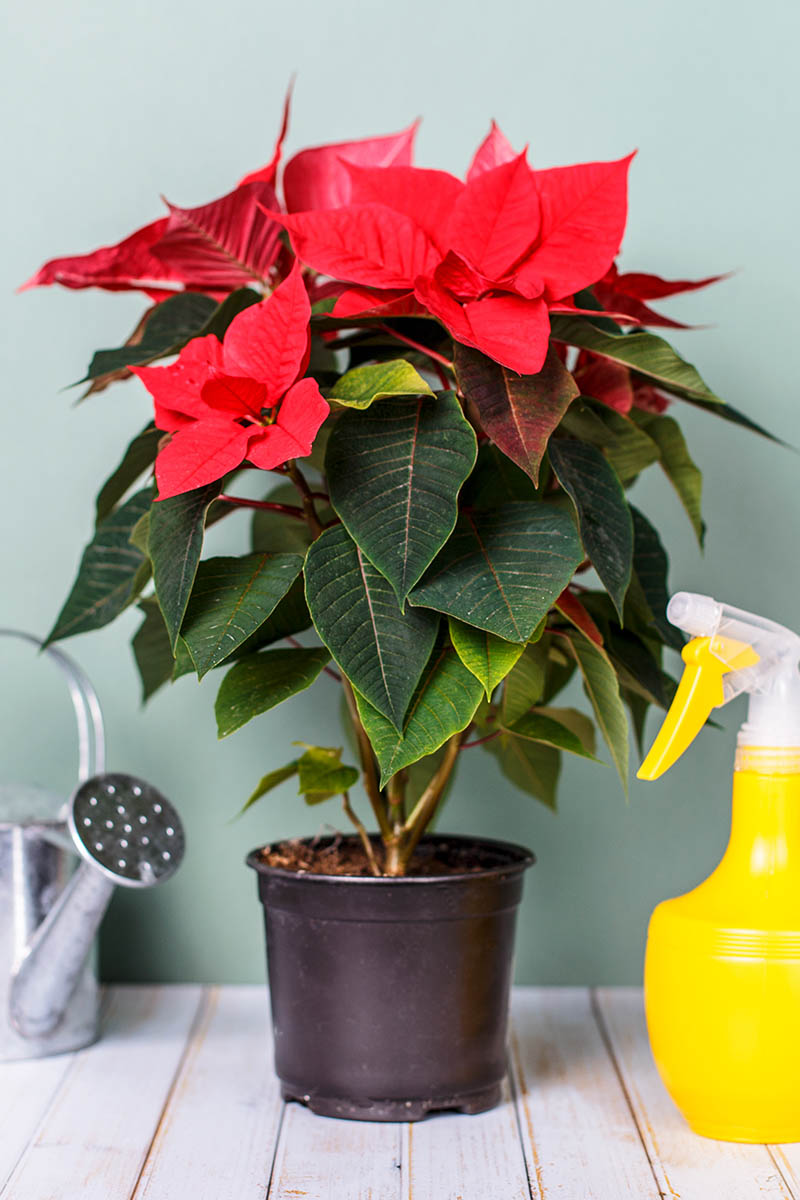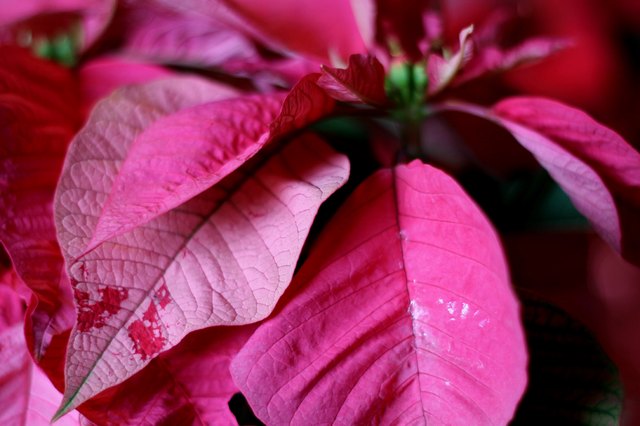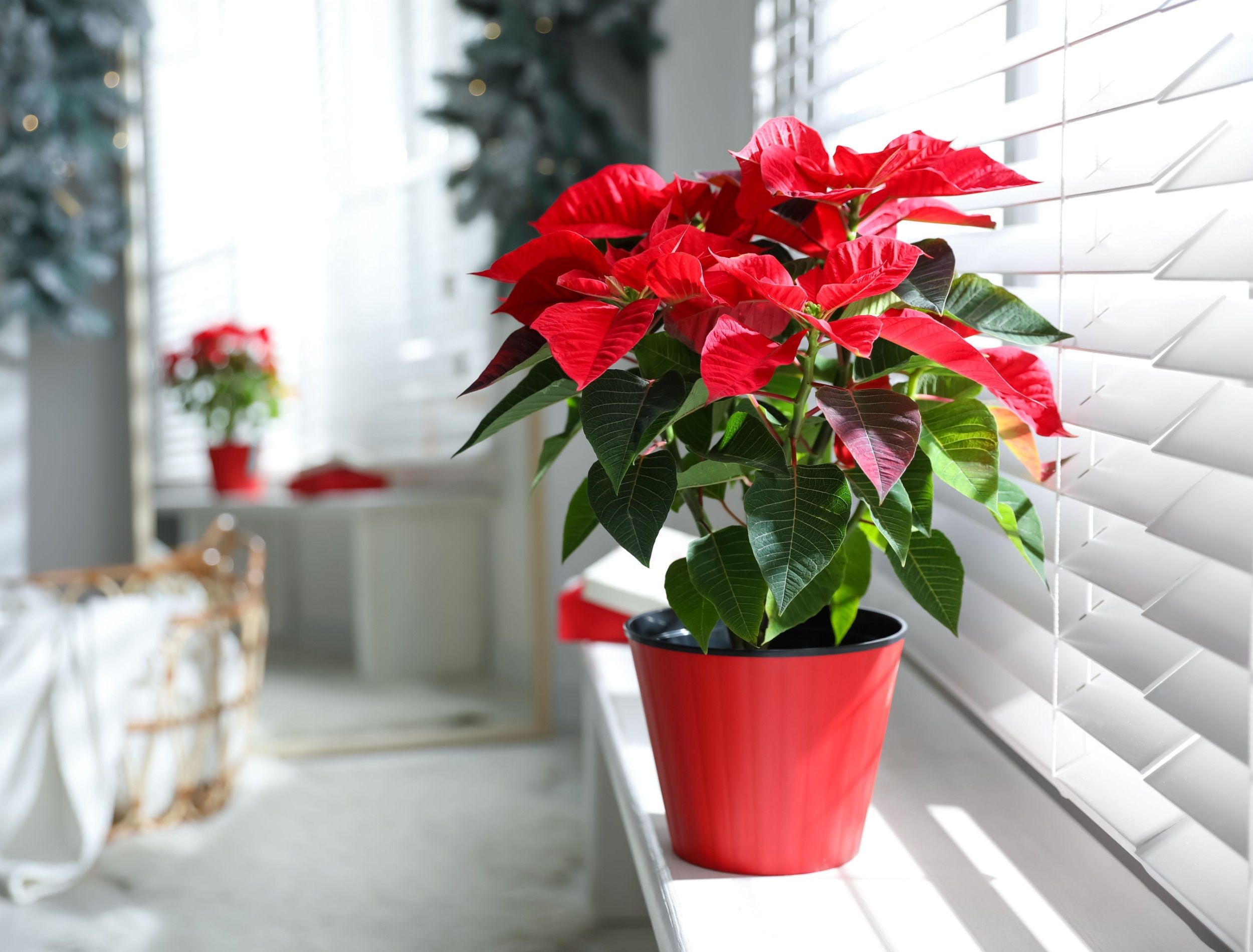Choosing the Perfect Poinsettia: What to Look for When Selecting a Healthy Plant
When selecting a poinsettia plant, there are several key factors to consider to ensure you choose a healthy and thriving plant. One of the most important things to look for is the color and shape of the bracts, which are the brightly colored leaves that surround the flowers. Look for plants with bracts that are a deep, rich color and are evenly shaped. Avoid plants with bracts that are wilted, faded, or misshapen.
In addition to the bracts, also inspect the health of the leaves. Look for leaves that are a deep green color and are free of any signs of disease or pests. Avoid plants with leaves that are yellowing, droopy, or have any visible signs of damage. The overall appearance of the plant is also important. Look for plants that are well-balanced and have a full, lush appearance. Avoid plants that are leggy or sparse.
When selecting a poinsettia plant, it’s also important to consider the size and shape of the plant. Look for plants that are proportional to the pot and have a balanced shape. Avoid plants that are too large or too small for the pot. By considering these factors, you can choose a healthy and thriving poinsettia plant that will provide you with beautiful flowers and foliage throughout the holiday season.
Learning how to care for a poinsettia plant starts with selecting a healthy plant. By choosing a plant that is well-cared for and healthy, you can ensure that it will thrive and provide you with beautiful flowers and foliage throughout the holiday season. With proper care and attention, a poinsettia plant can be a beautiful and festive addition to your holiday decor.
Providing the Right Environment: Lighting, Temperature, and Humidity for Poinsettias
Poinsettias are sensitive to their environment, and providing the right conditions is crucial for their health and well-being. One of the most important factors to consider is lighting. Poinsettias require bright, indirect light to thrive, but direct sunlight can cause the leaves to become scorched and the flowers to fade. East- or west-facing windows are ideal for poinsettias, as they provide gentle, indirect light.
Temperature is also an important consideration when caring for a poinsettia. These plants prefer consistent temperatures between 65-70°F (18-21°C), which is slightly cooler than the average room temperature. Avoid placing poinsettias near heating or cooling vents, fireplaces, or drafty windows, as sudden changes in temperature can cause stress to the plant.
Humidity is another factor to consider when caring for a poinsettia. These plants prefer a relatively high humidity, typically above 50%. To maintain the right humidity level, you can place the poinsettia on a tray filled with water and pebbles or use a humidifier nearby. Avoid placing poinsettias in areas with low humidity, such as near heating vents or in dry climates.
By providing the right environment for your poinsettia, you can help it thrive and enjoy its beautiful flowers and foliage throughout the holiday season. Remember to keep the plant away from extreme temperatures, direct sunlight, and dry air, and provide it with bright, indirect light and consistent humidity. With proper care and attention, your poinsettia will be a stunning addition to your holiday decor.
Learning how to care for a poinsettia plant involves understanding its specific needs and providing the right environment. By following these tips, you can help your poinsettia thrive and enjoy its beautiful flowers and foliage throughout the holiday season.
Watering Your Poinsettia: Tips for Avoiding Overwatering and Root Rot
Watering is a crucial aspect of poinsettia care, and it’s essential to get it right to prevent overwatering and root rot. Poinsettias prefer well-draining soil, and the pot should have drainage holes to prevent waterlogged soil. Check the soil moisture by sticking your finger into the soil up to the first knuckle. If the soil feels dry, it’s time to water.
When watering your poinsettia, make sure to water at the base of the plant, avoiding the leaves to prevent fungal diseases. Water thoroughly until water drains out of the bottom of the pot. Allow the top inch of soil to dry out between waterings. Avoid getting water on the leaves or crown of the plant, as this can cause rot and other problems.
It’s also essential to avoid overwatering, which can lead to root rot and other issues. Check the plant’s water needs by observing its behavior. If the leaves start to droop or turn yellow, it may be a sign that the plant is getting too much water. Reduce watering frequency, and make sure the pot has good drainage holes.
Learning how to care for a poinsettia plant involves understanding its watering needs. By following these tips, you can help your poinsettia thrive and enjoy its beautiful flowers and foliage throughout the holiday season. Remember to check the soil moisture regularly, avoid overwatering, and provide good drainage to prevent root rot.
Proper watering is critical to maintaining the health and appearance of your poinsettia. By following these guidelines, you can help your plant thrive and enjoy its beautiful flowers and foliage throughout the holiday season.
Fertilizing Your Poinsettia: How to Feed Your Plant for Optimal Growth
Fertilizing is an essential part of poinsettia care, as it provides the necessary nutrients for optimal growth and flowering. Poinsettias are heavy feeders and require regular fertilization to maintain their health and appearance. A balanced, water-soluble fertilizer is ideal for poinsettias, and it should be applied once a month.
When selecting a fertilizer for your poinsettia, look for a product that is specifically formulated for flowering plants. A fertilizer with a balanced N-P-K ratio (nitrogen-phosphorus-potassium) is ideal, as it provides the necessary nutrients for healthy growth and flowering. Avoid using high-nitrogen fertilizers, as they can promote leaf growth at the expense of flowering.
It’s also essential to avoid overfertilizing, as this can cause more harm than good. Overfertilization can lead to weak and leggy growth, as well as a decrease in flowering. To avoid overfertilizing, start with a small amount of fertilizer and gradually increase the frequency and amount as needed.
Learning how to care for a poinsettia plant involves understanding its fertilization needs. By providing the right nutrients, you can help your poinsettia thrive and enjoy its beautiful flowers and foliage throughout the holiday season. Remember to fertilize regularly, but avoid overfertilizing, and use a balanced fertilizer specifically formulated for flowering plants.
Proper fertilization is critical to maintaining the health and appearance of your poinsettia. By following these guidelines, you can help your plant thrive and enjoy its beautiful flowers and foliage throughout the holiday season.
Poinsettia Pest Control: How to Identify and Manage Common Pests
Poinsettias are susceptible to various pests, including mealybugs, spider mites, and aphids. These pests can cause significant damage to the plant, leading to yellowing leaves, stunted growth, and reduced flowering. To manage pest infestations, it’s essential to identify the pests early and take prompt action.
Mealybugs are small, white, cottony insects that feed on the sap of the plant. They can be found on the leaves, stems, and flowers of the poinsettia. To control mealybugs, use insecticidal soap or neem oil, and make sure to spray the undersides of the leaves and the soil.
Spider mites are tiny, spider-like insects that feed on the sap of the plant. They can cause yellowing leaves and fine webbing on the leaves and stems. To control spider mites, use insecticidal soap or neem oil, and make sure to spray the undersides of the leaves and the soil.
Aphids are small, soft-bodied insects that feed on the sap of the plant. They can cause curled or distorted leaves and can transmit plant viruses. To control aphids, use insecticidal soap or neem oil, and make sure to spray the undersides of the leaves and the soil.
Learning how to care for a poinsettia plant involves understanding how to manage pest infestations. By identifying pests early and taking prompt action, you can prevent significant damage to the plant and ensure it remains healthy and thriving. Remember to use organic or chemical controls as needed, and always follow the instructions on the label.
Preventing pest infestations is key to maintaining the health and appearance of your poinsettia. By taking proactive steps to manage pests, you can enjoy your poinsettia’s beautiful flowers and foliage throughout the holiday season.
Pruning and Grooming Your Poinsettia: How to Keep Your Plant Looking Its Best
Pruning and grooming are essential steps in maintaining the health and appearance of your poinsettia. By removing dead or damaged leaves and stems, you can help prevent the spread of disease and encourage new growth. Pruning also helps to maintain the plant’s shape and promote bushy growth.
To prune your poinsettia, start by removing any dead or damaged leaves or stems. Cut back leggy stems to encourage branching and shape the plant to maintain its desired shape. Use clean, sharp pruning tools to prevent spreading disease.
In addition to pruning, grooming is also important to keep your poinsettia looking its best. Gently remove any dust or debris from the leaves and stems using a soft-bristled brush or a damp cloth. This will help to keep the plant clean and prevent the buildup of pests and diseases.
Learning how to care for a poinsettia plant involves understanding the importance of pruning and grooming. By regularly pruning and grooming your poinsettia, you can help maintain its health and appearance, and encourage new growth and flowering. Remember to prune and groom your poinsettia regularly to keep it looking its best.
Pruning and grooming are critical steps in maintaining the health and appearance of your poinsettia. By following these tips, you can help your poinsettia thrive and enjoy its beautiful flowers and foliage throughout the holiday season.
Reblooming Your Poinsettia: How to Encourage Your Plant to Produce New Flowers
Reblooming a poinsettia can be a challenging but rewarding process. To encourage your poinsettia to produce new flowers, you’ll need to provide the necessary conditions, including darkness, cool temperatures, and fertilization. Start by placing your poinsettia in a dark room or covering it with a black cloth to simulate the natural winter darkness.
Next, reduce the temperature to around 50-60°F (10-15°C) to slow down the plant’s growth and encourage flowering. You can also use a fertilizer specifically formulated for blooming plants to provide the necessary nutrients for flower production.
It’s also essential to provide your poinsettia with a period of cooler temperatures, around 40-50°F (4-10°C), for 30-60 days to induce flowering. This process is called “vernalization,” and it helps to stimulate the plant’s natural flowering cycle.
Learning how to care for a poinsettia plant involves understanding the process of reblooming. By providing the necessary conditions, including darkness, cool temperatures, and fertilization, you can encourage your poinsettia to produce new flowers and enjoy its beautiful blooms for months to come.
Reblooming a poinsettia requires patience and attention to detail, but the results are well worth the effort. By following these tips, you can help your poinsettia thrive and enjoy its beautiful flowers and foliage throughout the holiday season.
Common Problems and Solutions: Troubleshooting Common Poinsettia Issues
Despite proper care, poinsettias can still experience common problems that can affect their health and appearance. Leaf drop, yellowing leaves, and lack of flowering are some of the most common issues that can affect poinsettias.
Leaf drop can be caused by a variety of factors, including overwatering, underwatering, and extreme temperatures. To address leaf drop, check the soil moisture and adjust your watering schedule accordingly. Also, ensure that your poinsettia is receiving the right amount of light and temperature.
Yellowing leaves can be caused by overfertilization, underwatering, or exposure to extreme temperatures. To address yellowing leaves, reduce the frequency of fertilization and ensure that your poinsettia is receiving the right amount of water and light.
Lack of flowering can be caused by a variety of factors, including insufficient light, inadequate fertilization, and extreme temperatures. To address lack of flowering, ensure that your poinsettia is receiving the right amount of light and fertilization, and maintain a consistent temperature between 65-70°F (18-21°C).
Learning how to care for a poinsettia plant involves understanding how to troubleshoot common problems. By identifying the causes of common issues and taking prompt action, you can help your poinsettia thrive and enjoy its beautiful flowers and foliage throughout the holiday season.
By following these troubleshooting tips, you can help your poinsettia overcome common problems and maintain its health and appearance. Remember to monitor your plant regularly and take prompt action if you notice any issues.








